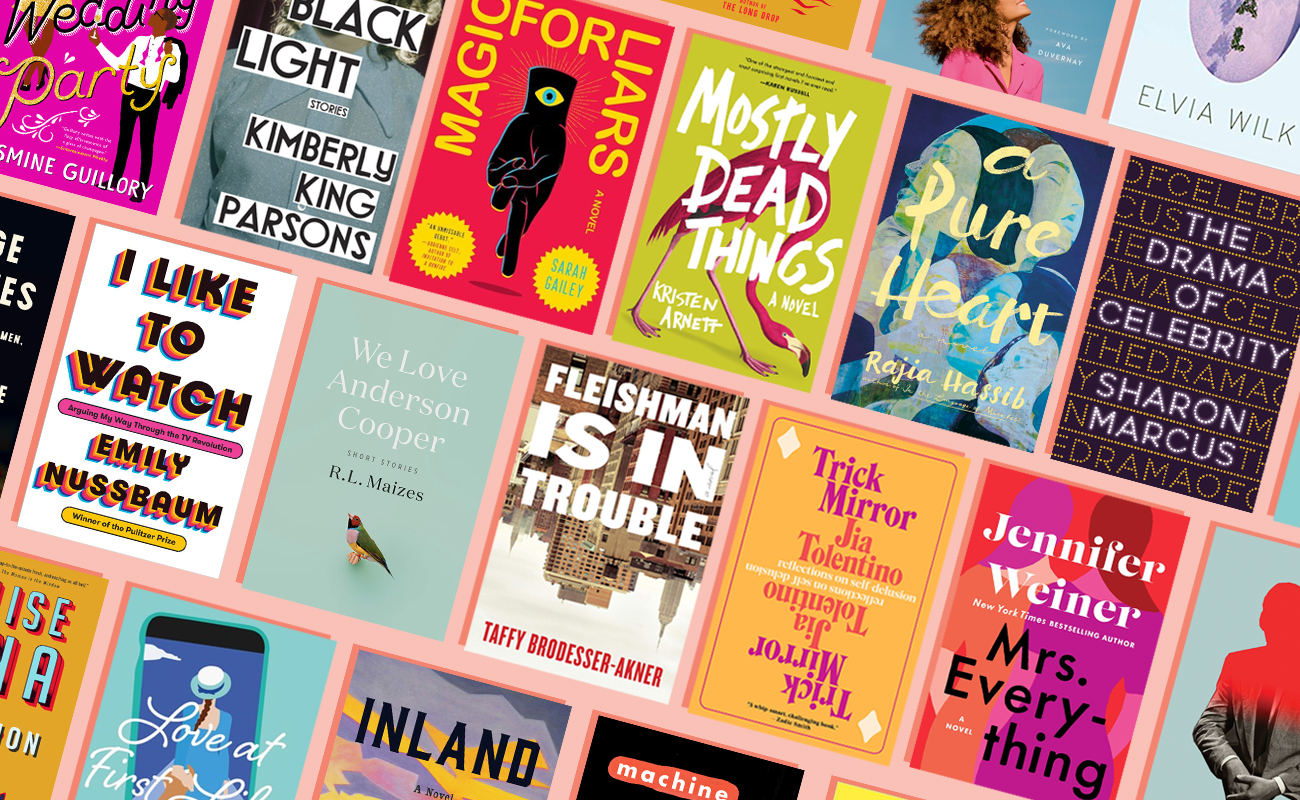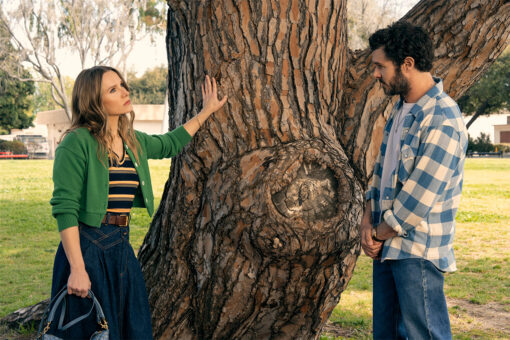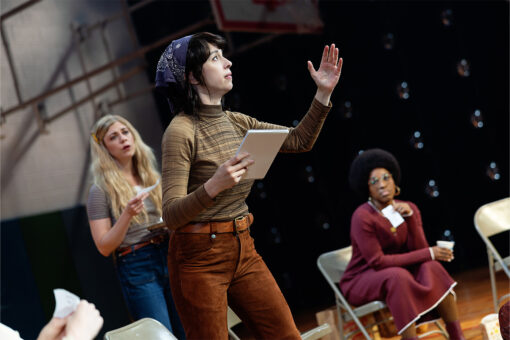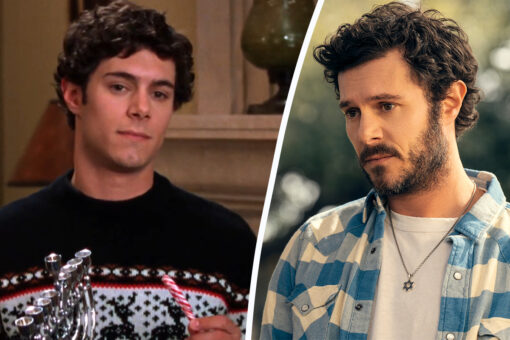Ah, summer reading. Ideally, it’s done on a beach somewhere. More likely, it’s on a hot and sweaty subway car, or lying under your air conditioner, or pretending to be on vacation.
Wherever you read, we are here with 20 books coming out in June, July, and August that will surely make your summer better. (Check out our spring guide for books you can get right now!)
1. Fleishman Is In Trouble — Taffy Brodesser-Akner (June)
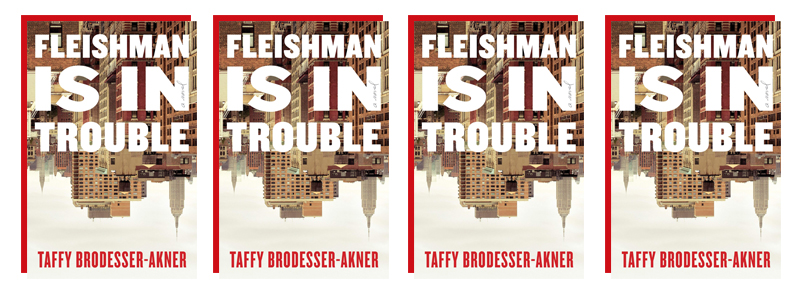
Just wow. This is definitely going to be one of the buzziest — if not the buzziest — book of the summer, and it does not disappoint. Fleishman Is In Trouble is writer Taffy Brodesser-Akner’s debut novel, and it tells the story of Toby and Rachel Fleishman, who have just separated after 15 years together. It takes place a couple months after their separation, when one night, Rachel drops the kids at Toby’s apartment and disappears. But Toby and Rachel don’t narrate the story — that falls to Libby, an old college friend of Toby’s whom he met studying abroad in Israel. Libby is a magazine writer who lives in suburban New Jersey and is struggling as a stay-at-home mom. We won’t spoil anything for you — you really must read it yourself — but it’s a masterclass in storytelling. Elizabeth Gilbert’s pull quote has to be our favorite: “Just the sort of thing that Philip Roth or John Updike might have produced in their prime (except, of course, that the author understands women).”
Read if you’re into: family sagas, Taffy’s profile of Gwyneth Paltrow, nuanced women, smart humor, and so much more. Get it here.
2. We Love Anderson Cooper — R. L. Maizes (July)
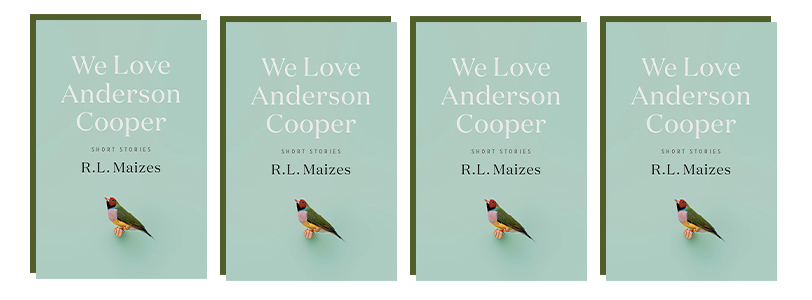
The title of We Love Anderson Cooper comes from the first story in R. L. Maizes’s debut story collection: After a bar mitzvah boy comes out as gay on the bimah, his parents are upset he didn’t tell him first. “We love Anderson Cooper!” his mom ensures. This humor underpins the majority of the stories found within the collection. They all center on protagonists who are just a little weird. There’s a tattoo artist who helps cancer survivors reclaim their bodies; a Jewish man who feels betrayed by his cat when it likes his girlfriend’s Christmas tree; and a therapist whose couch broke. The 11 stories in We Love Anderson Cooper focus on Jewish themes, dealing with death, and people who love their pets.
Read if you’re into: short stories (duh), pets, and Jewish people! Get it here.
3. Magic for Liars — Sarah Gailey (June)
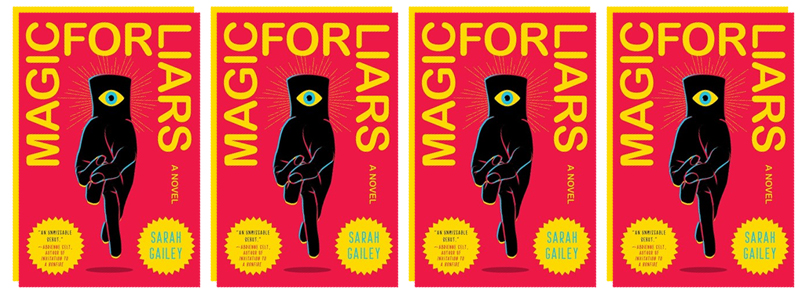
Okay, so, think Veronica Mars but with a magic twin sister, and not in Neptune, California but at a Hogwarts-esque high school and you have Sarah Gailey’s Magic for Liars! Their debut novel is the story of Ivy, a private investigator, who is hired for a murder case at the school her twin sister Tabitha teaches at. Tabitha is magical, Ivy is not, and they’ve been estranged since their mother died of cancer in high school. The murder case sort of falls to the background as Ivy tries to re-connect with Tabitha, but it ends with a satisfying conclusion. Gailey described their novel as “magic, murder, lies, and self-destruction,” which, yes.
Read if you’re into: well… magic, murder, lies, and self destruction. Get it here.
4. Oval – Elvia Wilk (June)
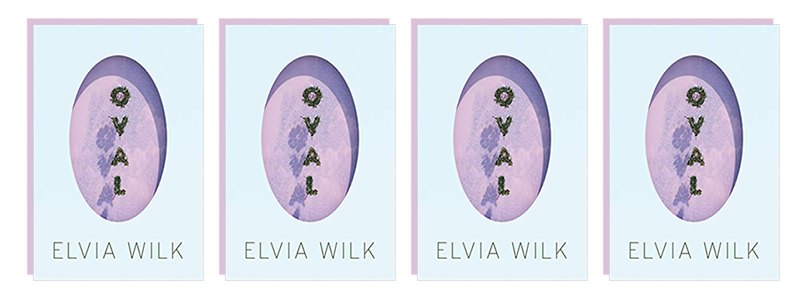
Set at some point in the future, Elvia Wilk’s Oval is set in a world ravaged by climate change (so, not too far from our own). Anja, our protagonist, lives with her boyfriend, Louis, in an experimental eco-community in Berlin on the side of a fake mountain where everything they do is monitored. But soon, the house starts to collapse — and everything they were promised about the community seems to be failing (along with their relationship). Meanwhile Louis, an artist and “disruption consultant,” is developing a drug called Oval, where people get high off of being generous, which he thinks could solve all the world’s problems. Oval offers commentary on capitalism, consultants, drugs, climate change, and more — but it’s more than commentary. It’s smart and enjoyable and a little bit terrifying.
Read if you’re into: speculative fiction, thinking about climate change, Annihilation, satire, and dystopias. Get it here.
5. Trick Mirror — Jia Tolentino (August)
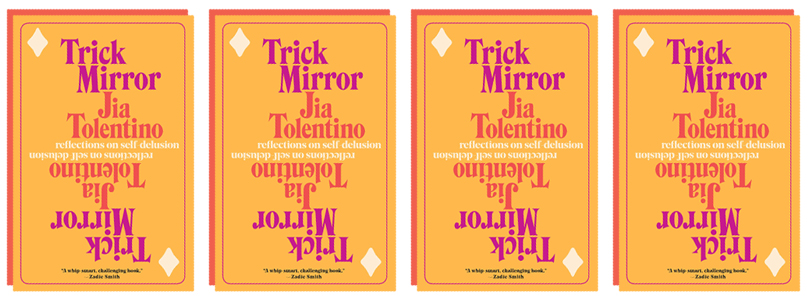
Have you read Jia Tolentino’s essays in The New Yorker? Yes? You’re also as obsessed with her as we are? Great, let’s continue. Tolentino’s debut essay collection, Trick Mirror, is nine essays “for readers who’ve wondered what Susan Sontag would have been like if she had brain damage from the internet.” Which: hell yeah! Kirkus Reviews likens her to Joan Didion, calling her “a key voice of her generation.”
High praise that’s well-deserved — it’s one of those essay collections where you want to highlight every single sentence. One of my favorite essays was “Pure Heroines,” where Tolentino writes about portrayals of girls and women in literature. “If you were a girl, and you were imagining your life through literature, you would go from innocence in childhood to sadness in adolescences to bitterness in adulthood—at which point, if you hadn’t killed yourself already, you would simply disappear,” the essay begins.
Read if you’re into: Is this obvious? Jia Tolentino’s essays. Also smart and thoughtful reflections on the Internet, reality TV, social media, sexual assault, weddings, athleisure, and more. Get it here.
6. Mrs. Everything — Jennifer Weiner (June)

Jennifer Weiner’s latest tells the story of the Kaufman sisters, Jo and Bethie, from the 1950s to the present. Their lives unfold against the background of historical events as wide-ranging as the civil rights movement, the Vietnam War, and the 2016 election. The novel traces the sisters’ journey into feminism, activism, having their own families, and so much more. If this sounds purposefully vague, it is — the power of Mrs. Everything is that you are so wrapped up in the story, you don’t want to put it down. (Confession: I read it in one night!)
“It’s, by far, the most ambitious work I’ve ever attempted. I hope that it has all the things readers have come to expect from my stories and characters. And, even though it is fiction, I hope it tells some truths about who we are, how we got here, and how we move on,” Weiner wrote regarding the book.
Read if you’re into: family sagas, Jewish stories, sisters, history. Get it here.
7. Conviction — Denise Mina (June)

For the true crime fans out there, you will not want to miss Conviction. It’s part commentary on true crime fandom, and part crime story itself (though fictional). The story centers on a wealthy woman named Anna who finds her entire life upended when a true crime podcast reveals her actual past. The first chapter begins, “The day my life exploded started well.” It’s narrated from Anna’s POV, and the first half is her listening to the podcast (which is transcribed in the text), and the second half is — well, we won’t spoil it.
“A lot of feminist writers are writing crime fiction, because it is consumed quickly and widely. And if you want abused women to be anything other than passive then you need to tell stories about them as active characters,” Mina said in an interview. “The vast majority of readers are women.”
Read if you’re into: true crime! True crime podcasts! Fictional crime! Get it here.
8. Savage Appetites: Four True Stories of Women, Crime and Obsession — Rachel Monroe (August)

For those who want *true* true crime, this one is for you. Rachel Monroe breaks down the genre — asking why do we love it? Why are women so drawn to such gruesome stories? She centers the book on four true stories, each linked to a key archetype (Detective, Victim, Defender, Killer). Let me just grab the book’s description of each for you, because it’s better than anything I can sum up:
Detective: “In the 1940s, a frustrated heiress began creating dollhouse crime scenes depicting murders, suicides, and accidental deaths. Known as the ‘Mother of Forensic Science,’ she revolutionized the field of what was then called legal medicine.”
Victim: “In the aftermath of the Manson Family murders, a young woman moved into Sharon Tate’s guesthouse and, over the next two decades, entwined herself with the Tate family.”
Defender: “In the mid-nineties, a landscape architect in Brooklyn fell in love with a convicted murderer, the supposed ringleader of the West Memphis Three, through an intense series of letters. After they married, she devoted her life to getting him freed from death row.”
Killer: “And in 2015, a teenager deeply involved in the online fandom for the Columbine killers planned a mass shooting of her own.”
This is either super up your alley, or super not, but if it is, you’re going to love it.
Read if you’re into: true crime, Law & Order: SVU, this interview we did with crime writer Sarah Weinman, wondering why you’re drawn to dark stuff. Get it here.
9. Inland — Téa Obreht (August)
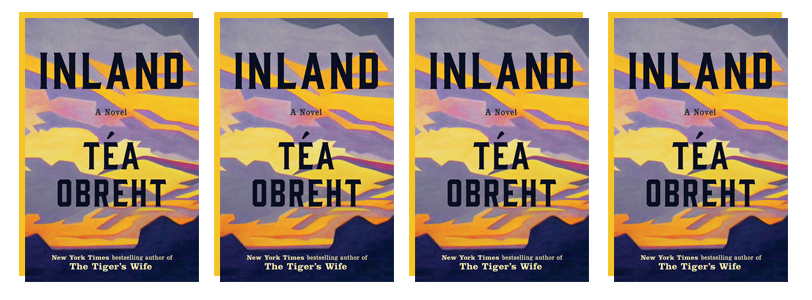
Téa Obreht’s follow up to her 2011 award-winning novel The Tiger’s Wife is finally here. Inland is set in the Arizona Territory in 1893, telling the tale of Nora, a frontierswoman dealing with a drought, and Lurie, a Turkish immigrant and former outlaw. We don’t want to give too much away — as a warning it starts off super confusing. As Publishers Weekly puts it, “It’s kind of a western. It’s kind of a ghost story. And part of it is narrated by a reformed outlaw to a camel named Burke. It’s definitely its own thing, and it’s something you want to get lost in.” Amen.
Read if you’re into: historical fiction! Cowboys! The American west! Get it here.
10. The Wedding Party — Jasmine Guillory (July)
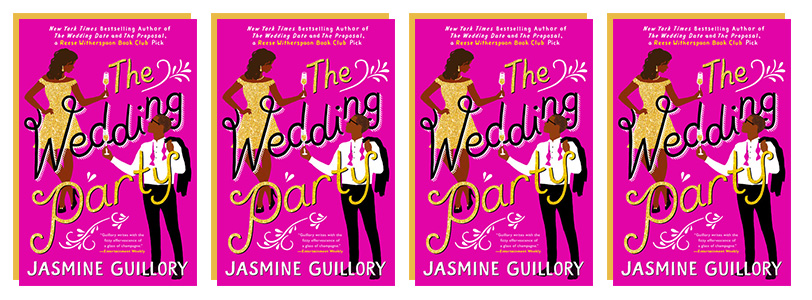
We love romance writer Jasmine Guillory! She’s made an appearance twice before on our seasonal book previews — fall 2018 and summer 2018 — and, well, third time’s the charm! All of her books exist within the same universe, so these characters may be familiar if you’ve read her previous work. This one centers around Alexa’s wedding (she was the protagonist of The Wedding Date), and her two best friends who do not like each other, but can’t deny their attraction. As I read, I could not stop smiling at my book. The characters are so real — and refreshingly diverse — that you can’t help but get sucked into the story.
My collage roommate and I are big fans of Guillory’s work, and as we were texting about the newest book, she wrote, “I wish it was like the Bachelor and I could follow them on Insta and see the rest of their love story.” Hard same.
Read if you’re into: romaaaaance, baby. Get it here.
11. The Dry Heart — Natalia Ginzburg (new translation by Frances Frenaye) / Happiness, as Such — Natalia Ginzburg (new translation by Minna Zallman Proctor) (June)
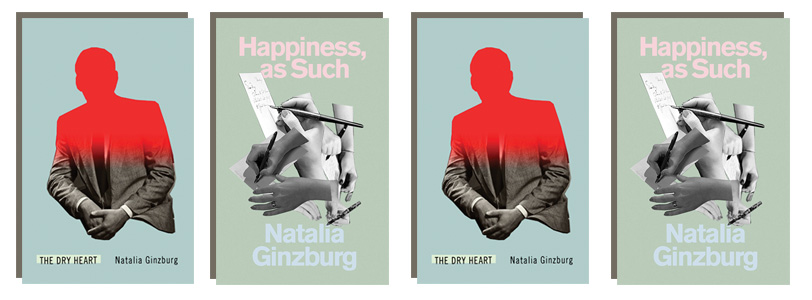
A two-for-the-price-of-one list entry! Natalia Ginzburg is an Italian novelist and playwright, born Natalia Levi in 1916 in Palermo, Sicily, who died in 1991. New translations of two of her books are being released this summer, and we are beyond excited. Some background on Natalia: Her dad, Giuseppe Levi, was an acclaimed Jewish Italian professor. Natalia was raised secular. In 1938, she married Leone Ginzburg, and they had three children. Leone was a noted anti-fascist political activist; in 1943, he was arrested by Nazi forces in Italy and in 1944, he died in prison at age 34. A few years later, Natalia converted to Catholicism. Nevertheless, she remains one of the most influential post-WWII Italian Jewish writers, and even became a member of the Italian parliament.
“Ginzburg, who authored twelve books and two plays; who, because of anti-Semitic laws, sometimes couldn’t publish under her own name; who raised five children and lost her husband to Fascist torture; who was elected to the Italian parliament as an independent in her late sixties—this woman does not take her present conditions as a given. She asks us to fight back against them, to be brave and resolute. She instructs us to ask for better, for ourselves and for our children,” writes Belle Boggs in The New Yorker.
The Dry Heart, a novella, was originally published in Italian in 1947; it starts with the narrator announcing she has just shot her husband. You know how the story will end, but it doesn’t make the story any less engaging or powerful. Happiness, as Such, a novel, is the story of Michele, an Italian man involved in radical politics who flees to England. It’s a powerful family story.
Read if you’re into: discovering writers who have been quasi-forgotten. Long live Natalia! Get The Dry Heart here and get Happiness, as Such here.
12. A Pure Heart — Rajia Hassib (August)
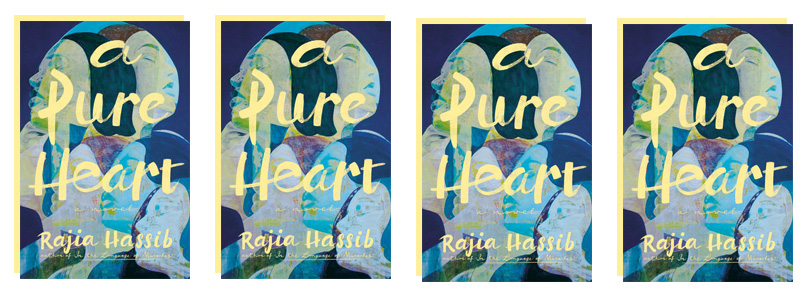
Rajia Hassab’s second novel, A Pure Heart, is set in the aftermath of the Arab Spring in Egypt. It tells the story of two sisters: Rose, who moved to America just before the Arab Spring, and Gameela, who stays in Egypt. Years later, Gameela is killed in a suicide bombing, and Rose returns to Egypt. I’ll let the book description take it away: “Soon, Rose realizes that Gameela has left many questions unanswered. Why had she quit her job just a few months before her death and not told her family? Who was she romantically involved with? And how did the religious Gameela manage to keep so many secrets?” Kirkus Reviews writes that A Pure Heart is “a devastating definition of the new normal in which revolution does not always deliver real power to institute change.”
Read if you’re into: stories about sisters, secrets, and the Middle East. Get it here.
13. Machine — Susan Steinberg (August)
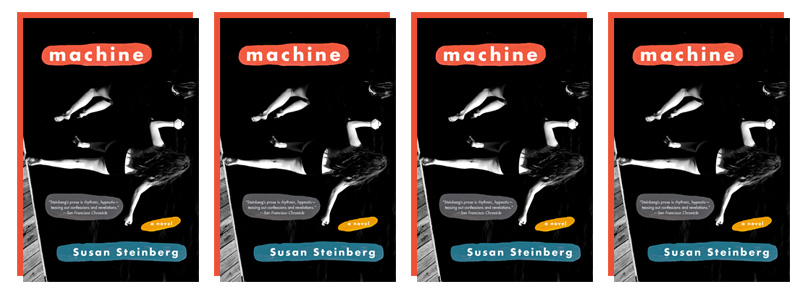
Machine is set over the course of one summer, in a resort community made up of townies and wealthy vacationers, focusing in on a group of teenagers. After one teen drowns, one girl tries to grapple with it and figure out who is to blame. Machine is narrated by one person, but it also slips into first personal plural. LitHub writes, “The voice of the story—sometimes singular, sometimes with other echoes—will guide and haunt you as it tries to make sense of what happened.”
As Steinberg explained in an interview, “That was a strange approach to first person for me, this sort of like what happens when your first-person narrator is so traumatized and so kind of absorbed into her friend group that she can’t always be an ‘I.'”
Read if you’re into: genre-bending prose, mysteries, reading stories about summer in the summertime. Get it here.
14. Mostly Dead Things — Kristen Arnett (June)
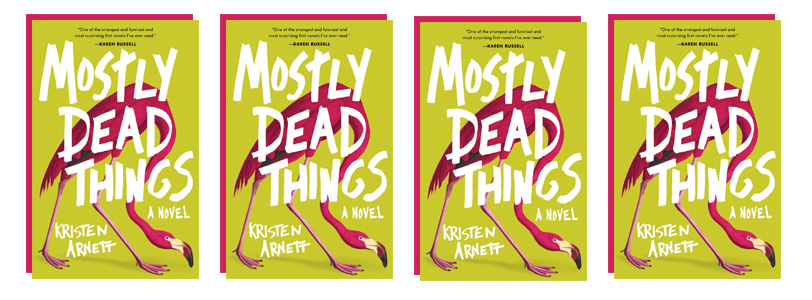
From Alma Editor Molly Tolsky: Mostly Dead Things is the queer-taxidermy-Florida novel you didn’t know you’ve been waiting for. Kristen Arnett (who is hilarious on Twitter, go follow her immediately) has created a world in which, while the animals are dead, the humans are very much alive. The novel tells the story of a young women, Jessa, who takes over her family business, which just so happens to be taxidermy, while also grieving over two primary losses: that of her dad, and an old friend-turned-sometimes-lover who’s jumped ship. A few trigger warnings: The novel starts with the narrator’s father’s suicide, and there’s lots of guts and organs and animal skins. But there’s also lesbian sex and peacocks and a side of Florida you probably haven’t seen.
Read if you’re into: queer love stories, dysfunctional families, dark humor. Get it here.
15. The Drama of Celebrity — Sharon Marcus (June)

Why are we so obsessed with celebrities? Sharon Marcus, an English professor at Columbia, does a deep dive into this question. She presents a new theory of celebrity culture, arguing convincingly that “celebrity culture is a drama involving three equally powerful groups: media producers, members of the public, and celebrities themselves.” Marcus writes about everyone from Lady Gaga to Elvis to Rihanna to French stage actress Sarah Bernhardt from the late 1800s. “Most history of celebrity culture emphasize change over time and variation across media,” she writes in the conclusion, “this one has highlighted continuities.”
And this last woman is why we’re recommending The Drama of Celebrityto you: Marcus’s study of Bernhardt, a Jewish actress, is remarkable. Even though this is an academic text, it reads so well. And wow, could we read a bajillion more books on Sarah Bernhardt!!!
Read if you’re into: celebrities, non-fiction, and learning things! Get it here.
16. Love at First Like — Hannah Orenstein (August)
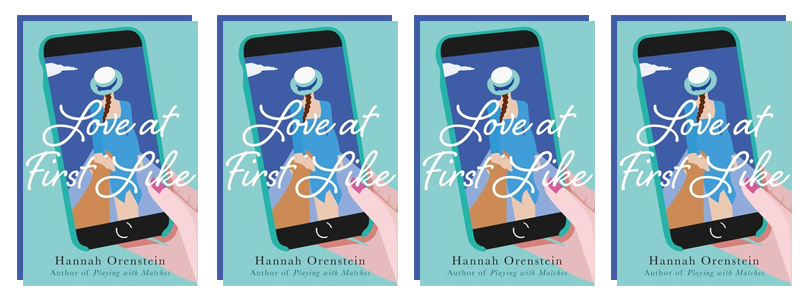
Eliza owns a jewelry shop with her sister, Sophie, in Brooklyn. After Eliza finds out her ex-boyfriend (“the guy with a Bernie Sanders tattoo who forgot to register to vote”) is engaged, she tries on an engagement ring, snaps a photo, and accidentally posts it on Instagram. Suddenly, there’s a viral interest in her store (unclear how this happens, but just go with it). And so, Eliza needs to find herself a boyfriend. This all happens within the first chapter; so fake dating plot takes up the majority of Love at First Like. Hannah Orenstein’s last book, Playing With Matches, was a similarly delightful rom-com. (Read our interview with Hannah here!)
Read if you’re into: FAKE ROMANCE PLOTS. Who doesn’t love these!? Get it here.
17. Black Light: Stories — Kimberly King Parsons (August)
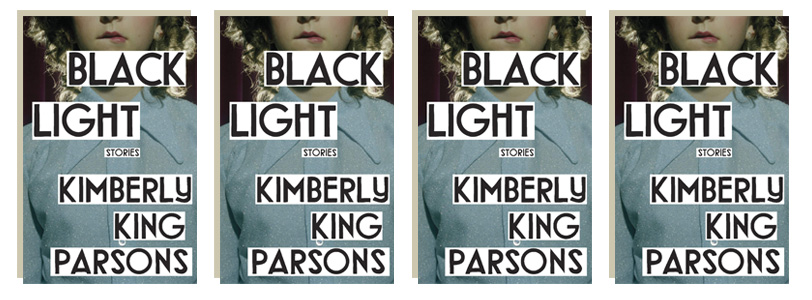
From Alma Editor Molly Tolsky: If you’re the kind of person who will read the same sentence over and over again because it’s just so good, you’re going to want to get to know Kimberly King Parsons. Her debut collection, Black Light, is full of stories that jump off the page thanks to Parsons’ intoxicating language and keen ability for rendering perfectly imperfect characters. The stories cover everything from messy love to addiction to sexuality with a heavy focus on female characters.
For a taste, check out “We Don’t Come Natural To It,” which follows two young girls with eating disorders out to catch some “thinspiration.” Just read this opening — “Suki and me, we’re hungry and mean. We’ve got bitter jewels buzzing in our guts. They’re bright and gaudy and we couldn’t ignore them if we wanted to. We don’t want to. It’s the starving that makes us glow—the gimcrack ache, that’s what Suki calls this.” — and tell me you don’t want to keep reading. You do.
Read if you’re into: short stories, stylized language, interrogating womanhood. Get it here.
18. Please Send Help — Gaby Dunn & Allison Raskin (July)

From Alma editorial assistant Arielle Kaplan: Remember Lauren Myracle’s The Internet Girls series? Well, if you like reading text message and email formatted stories, you’ll love Please Send Help. Real life BFFs and New York Times bestselling authors Allison Raskin and Gaby Dunn’s sequel toI Hate Everyone But You is a delightful, light summer read.
Fictional BFFs Ava and Gen (clearly based on the authors) finally graduated college and officially embarked on their adult journeys: Ava in NYC, working for a late night TV show, and Gen in Florida, writing for an old school local newspaper. Brutally honest and always an email or text away, the longtime friends help each other navigate stressful work drama, feral cats, and relationship woes. But as Gen and Ava adult over a thousand miles apart, can their friendship survive the distance? We won’t spoil it! Please Send Help is a witty novel that encapsulates what it’s like to conquer the world on your own, with your best friend just a text message away. (Pssst: read our interviews with Allison and Gaby!)
Read if you’re into: young adult novels, best friends, Hey Ladies!, adulting. Get it here.
19. More Than Enough: Claiming Space For Who You Are (No Matter What They Say) — Elaine Welteroth (June)
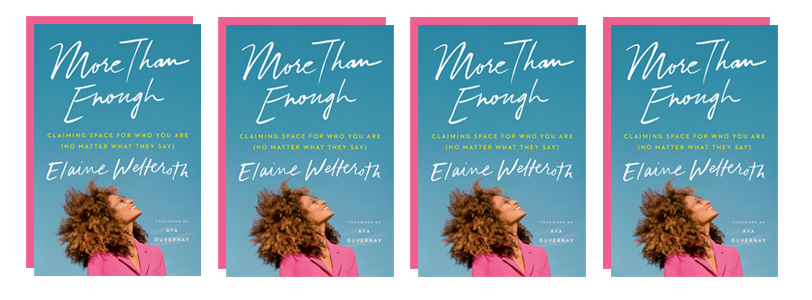
Elaine Welteroth was the youngest editor in Condé Nast history when she took the helm of Teen Vogue in 2016. She left in January 2018, a month after the final print issue of the magazine. But Elaine’s story is so much more than her time transforming Teen Vogue — and her memoir, More Than Enough, shows that.
It chronicles her childhood growing up with a black mom and a white dad, her experience at college, her pursuit of an internship at Ebony magazine with Harriette Cole (who then gave her the chance to prove herself on a cover shoot with Serena Williams!!!), and her career at Condé Nast. Welteroth’s honesty about her struggles in the media industry, her push to make the largely white field more diverse, and thoughts about being a “FOD” (First, Only, Different, coined by Shonda Rhimes) in her field is eye-opening. As someone who has followed Elaine on Instagram for a long time (me and thousands of others), getting to hear her full story was fantastic. The book ends with her leaving Teen Vogue, and, as Kirkus writes, “The author’s impressive career trajectory makes for fascinating reading, but what makes the book especially worthwhile is its depiction of an emergent social and political consciousness so strong that it eventually led her to abandon corporate media for the ‘joy of dancing into [an unknown] future.'”
Read if you’re into: journalism, inspirational women, behind-the-scenes of influencers. Get it here.
20. I Like to Watch: Arguing My Way Through the TV Revolution — Emily Nussbaum (June)
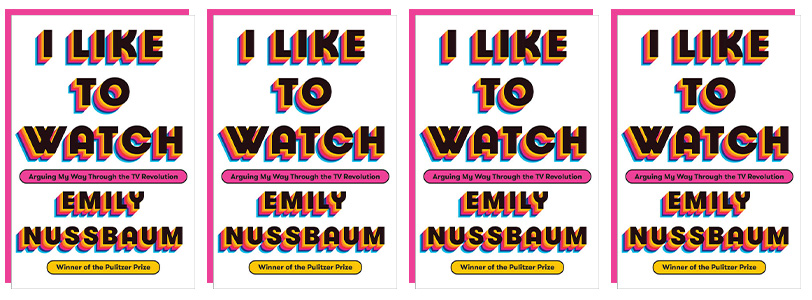
Did you really think our summer books preview wouldn’t include Emily Nussbaum? Her essay collection, I Like to Watch, is a must-read. She tweeted, “One of my kids wanted me to call it ‘What’s Got Two Thumbs and Likes TV?'” You may know Emily Nussbaum as the person who created the “Approval Matrix” in New York Magazine in 2004. Or you may know her from The New Yorker (where she has written about shows ranging from Russian Doll to The Marvelous Mrs. Maisel to Drunk History). Or you may know her from Twitter, where she tweets about TV and Jewishness and everything in between.
The Nanny in reruns is a more powerful Jewish woman than Ivanka Trump.
— Emily Nussbaum (@emilynussbaum) June 3, 2017
Can I ask a weirdly specific Maisel question? Do you think Midge's parents are German or Russian-Polish? Are they from the rich German-Jewish ranks of uptown NYers—or are they poor Polish-Russian Jews made good through education? They seem like a conflation of both sets to me.
— Emily Nussbaum (@emilynussbaum) December 6, 2018
In I Like to Watch, “Nussbaum writes about her passion for television, beginning with Buffy the Vampire Slayer, the show that set her on a fresh intellectual path. She explores the rise of the female screw-up, how fans warp the shows they love, the messy power of sexual violence on TV, and the year that jokes helped elect a reality television president. There are three big profiles of television showrunners—Kenya Barris, Jenji Kohan, and Ryan Murphy—as well as examinations of the legacies of Norman Lear and Joan Rivers. The book also includes a major new essay written during the year of #MeToo, wrestling with the question of what to do when the artist you love is a monster.”
Read if you’re into: watching TV, thinking about TV, reading about TV, you get the idea. Get it here.
